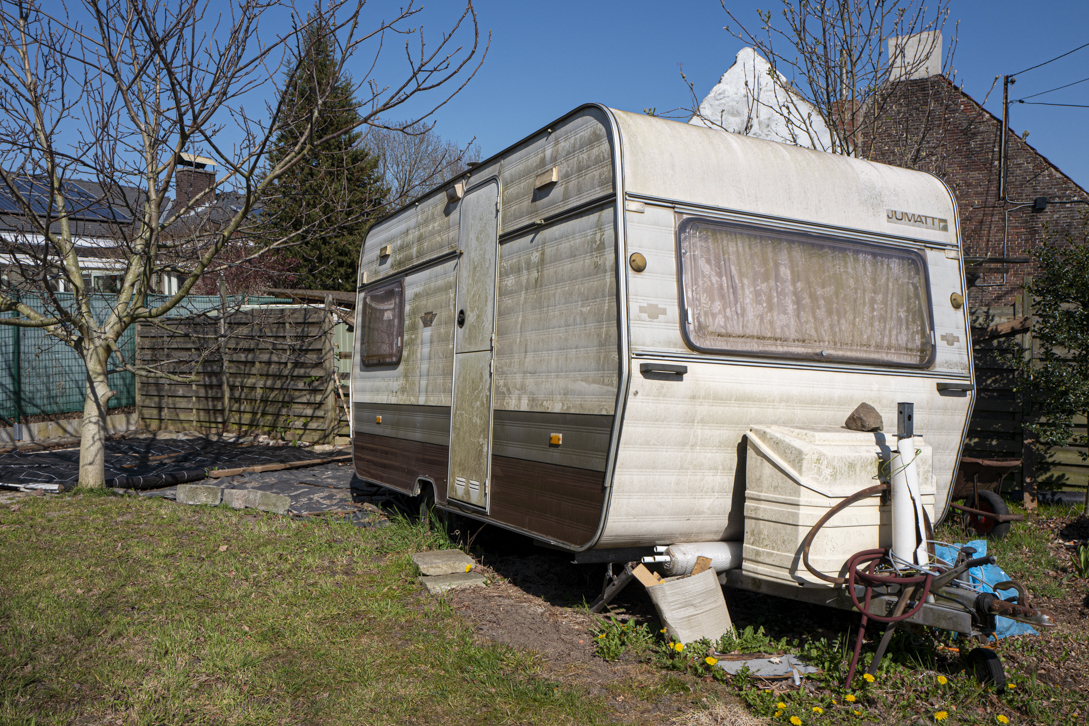10.02.2025 Wippelgem Castle - Belgium
Travelling by train allowed me to glimpse into people's backyards. Day by day, I traversed the landscapes of Belgium, and gradually I began to notice the abandoned symbols of freedom scattered throughout. Everywhere— in backyards, beneath trees, sometimes half-open, damaged, and painted— these caravans now served a new purpose. No longer the 'Big Symbol of Freedom,' they had been repurposed into storage spaces for garden tools or shelters for cows, sheep, goats, chickens, and horses. The days of glorious trips to France, Spain, or Italy were gone, replaced by the stark reality of confinement. From the 1950s through the 1980s, caravans enjoyed immense popularity as a means of travel that offered autonomy; you could load up with goods and family and set off whenever you chose. It was the ultimate holiday experience, characterized by designer shapes that blended clever design with practical ingenuity.
But then came COVID. Just as I began to create a series about caravans and their second destiny, I was seeking interesting stories from owners about the trips and adventures they once enjoyed together. This is why many of my photographs capture people with their symbols of freedom, now stranded at home.






